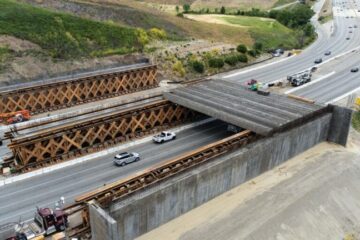Malibu wine growers feel squeeze of coastal protection plan
Proposed ban on new vineyards in Santa Monica Mountains worries Malibu growers
Source of this article: The Los Angeles Times, August 26, 2014
The red-lava rock hills over Malibu are no stranger to squabbles. This time, the fight is over grapes.
To explain the opposing sides, Dan Fredman — a vintner and public relations consultant — points to a slope off Mulholland Highway that has been cleared of chaparral and is now covered in vines.
“This is what the conservationists don’t like to see,” said Fredman, who was hired as the de facto pro-grape spokesman. “But to people like me, it’s beautiful…. It’s like, ‘Oh, look. We’re in Tuscany.'”
In recent years, the Malibu coast has branded itself as wine country. The Malibu Chamber of Commerce advertises a wine trail on its website, and some locals jokingly refer to it as “Napa-bu.” Wine-safari buses mosey through hills that hold more than 50 commercial vineyards.
This month, the region became a federally recognized American Viticultural Area, which means next year’s wine labels will boast “Malibu Coast” instead of the more generic description of where the grapes came from: “Los Angeles County.”
But the growth of Malibu wine country is threatened by proposed rules that would ban new vineyards in a large swath of the Santa Monica Mountains.
“To destroy this in its infancy … is as sad as it is ironic,” said Don Schmitz, who owns Malibu Solstice vineyard.
The ban, which would apply to 50,000 acres adjacent to, but not including, the city of Malibu, is part of a much bigger coastal resource protection plan that would limit the size of new homes and prevent any development on most ridgelines. In the works for more than a decade, it would give the county autonomy in the area instead of having to defer to the California Coastal Commission.
L.A. County Supervisor Zev Yaroslavsky said the regulations would ensure that the coastal mountains don’t become suburbanized, like those to the north in Calabasas or Agoura Hills.
“This plan makes sure that development doesn’t dictate the land,” he said, calling the vineyard ban “a very small tail that’s not even wagging the dog.”
Yaroslavsky dismissed claims that he targeted the wine community, saying the decision is really about the greater good.
“We’re being guided by science, not by the politics,” he said. “I love vineyards. I love Cabernet. But I wouldn’t want it at the expense of the natural area.”
The Board of Supervisors is slated to vote on the matter Tuesday, and backers have a long list of reasons why a ban on new vineyards makes sense: the potential for erosion if hillsides are cleared of their natural chaparral, the use of pesticides and the unnatural, linear look of trellises on slopes.
Another big reason: the drought.
“Vineyards are water suckers, there’s no question about it,” Yaroslavsky said. “It would be irresponsible for this plan not to address that.”
Mark Persson, Malibu Chamber of Commerce executive director, said he’s a big fan of everything in the proposed plan — except the vineyard regulation. He suspects it will have a negative effect on the local economy and doesn’t think the reasons behind it add up.
“To say a vineyard is going to be uber damaging to the planet didn’t sit well with me,” he said.
The vintners also expressed concern about claims of harm to the environment, saying that many locals don’t use pesticides and only water their vines for a few months each year. Several offered this argument: Avocado trees wouldn’t be banned, and they need more water than grape vines.
Although the proposed rule would prevent them from expanding, vineyards with Coastal Commission permits would be grandfathered in. Vintners who didn’t get those permits, however, might have to yank up their vines.
That’s the reality facing Dave and Ruth Gomez, who planted grapes on two slopes near their home 15 years ago.
Although they’re wine people now — a sign hanging in their kitchen reads, “Who needs therapy when you have wine?” — they originally put in the vines for practical reasons: A fire chief told them the shrubbery near their home would act like kindling in a wildfire and asked them to clear it away. They did, but then El Niño rains came, and eventually they decided to cover the bald hills with vines to help stop erosion.
The couple — he’s a rocket scientist, she’s a physical therapist — started getting good grapes after a few years and made their first wine in 2005. Now they produce about 120 cases a year: Syrah, Syrah Noir and Cabernet Sauvignon.
Tim Skogstrom, whose Cornell Winery stocks bottles from more than a dozen local vineyards, said the grapes grown at Bodegas Gomez de Malibu make some of the best wine in the Santa Monica Mountains.
But now, Ruth Gomez said, they’re worried they’ll lose it all.
“We don’t know if they’ll tell us to take the vines out,” she said. “We’ve invested thousands of dollars into this, and we’re just about to retire.”
“They just want to kick the bucket out from under us,” Dave Gomez said.
Fredman too is hopeful that the county will change course on the vineyard ban. But he knows what he’s up against.
“I understand that it’s difficult when you think about it like, ‘Oh, the poor people out in Malibu can’t put down their vines,'” he said. “People picture Pamela Anderson with her name on a bottle of wine, not Dave and Ruth out there.”



0 Comments